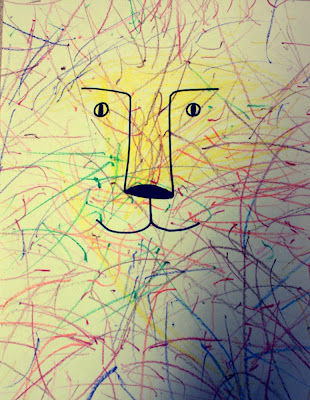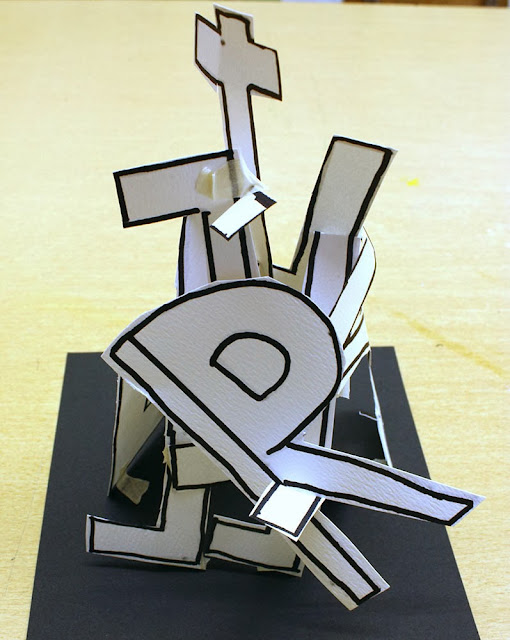Well, I guess we've seen the last of the falling leaves around here, but leaves are still blowing and falling around the art room as third graders are finishing up their falling leave batiks. There is a lot of info out on the net about making glue batiks and I wanted to try one after seeing
this this on Spoonful. Last year this same class did a
Blowing Leaf Watercolor Lesson that works up in a similar way. My batik method is a little different than what I see others doing so I'm sharing it with you today, because it makes managing the materials very easy.
To start your batik cut your fabric to size...I used old white cotton sheeting that I had on hand. I found my fabric up in the attic and it had some odd marks on it even after washing because it had been up there for quite a while. The fabric doesn't have to be pristine because it's going to be painted so old sheeting works well for this you can source this at tag or second hand shops if you don't have an attic like I do. Cut your fabric to size if you're particular. If you're always feeling rushed to get things done then make a little snip and tear your fabric to size. Pull away any loose strings and you'll have a soft frayed edge.
The secret to our success with this project is freezer paper. Notice the package says plastic coated.
Cut the freezer paper to the size of your fabric. The paper has a smooth papery side and a shiny waxy side and that's the trick. Students design with Sharpie pens on the papery side. For this project students drew a set of leaf templates that they arranged onto the paper and traced with the pens. If you don't have falling leaves you can print and cut out or trace
mine. Or make whatever design you like.
Step three: Place the waxy side of the freezer paper against the fabric and iron the two together. The paper will stick to the fabric and the Sharpie lines will show through as you can see in the picture below.
I use the little bottles of Elemer's glue in my classes. Yes, they need to be refilled more frequently, but they seem more manageable for little hands and don't seem to clog as easily. Trace over your lines with glue and let dry. You can easily manage the project because the paper is adhered below.
You can also use Elmer's blue gel glue, but it's more expensive. I'm using all purpose, because it's what I have on hand. A word of note. Have the children practice making a glue line on paper before moving their fabric. Show them how to hold the nozzle on the fabric to get a controlled line, otherwise they may be tempted to lift the bottle up and drip the glue down which could spoil their lines.
We used warm and cool colors to work up our designs and a great occasion to review color families as well as positive and negative shapes. We used watered down acrylic paints on these. Make them very watery they should spread when touched to the fabric. Paint the leaves and set aside to dry.
Provide a selection of cool colors and paint in the negative spaces and set aside. After the paint has dried, peel off the freezer paper, soak in warm water to wash out the glue and reaveal the beautiful white outlining. We haven't washed ours yet, but I'll post the final result when I return to school after the weekend.
























































